Mielec-Subcarpathian 作者: 来源: 发布时间:2021-10-27
Ⅰ. Population and Area
Population (2020)
• Total 60 229
Area
• Total 47.36 km2 (18.29 sq mi)
Website http://www.mielec.pl
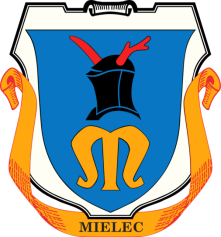
Ⅱ.Natural Geography (environment and resources)
-Mielec covers an area of 46.89 km 2, lies in the central part of the Sandomierz Basin on the Wisłoka River - the right tributary of the Vistula. It has a favorable climate with warm summers and mild winters.
-It is one of the sunniest places in the country. The vegetation period is approximately 220 days. A large forest complex (south-western part of the Sandomierz Forest), which is the city's natural cover from the north and east, has a significant impact on the climatic conditions.
-The soils of the area of Mielec and its vicinity show considerable diversity. In the Wisłoka valley, fertile marshes are predominant, and sands occur in the north-eastern part. In the eastern parts of the city, there are also mud soils, including peat exploited for medicinal purposes.
-Transport
-Road transport
-Mielec can be reached by the following provincial roads:
-provincial road No. 875 from Kolbuszowa
-provincial road No. 984 from Lisia Góra (near Tarnów ) through Radomyśl Wielki
-provincial road No. 983 from Sadkowa Góra
-provincial road No. 985 from Tarnobrzeg through Baranów Sandomierski
-provincial road No. 985 from Dębica
-Adam Mickiewicz Street
-City Bypass
-In addition, there is the Kielce - Staszów - Połaniec - Mielec - Kolbuszowa - Rzeszów route commissioned on November 12, 2014, under which a new bridge over the Vistula River near Połaniec and the eastern bypass of Mielec, the section of which linking the district road Mielec - Szydłowiec with the provincial road No. 875 Mielec - Kolbuszowa was put into service on November 3, 2014, and the section connecting the provincial road No. 875 Mielec - Kolbuszowa with the provincial road No. 985 Mielec -Dębica was put into service on January 9, 2015, and on August 13, 2015, the section connecting the district road Mielec - Szydłowiec with the voivodeship road No. 985 Mielec - Tarnobrzeg was commissioned . The bypass of Mielec has been part of the provincial road No. 985since October 5, 2015, and the streets in the city that were part of the provincial road, ie Sienkiewicza Street and Wojsławska Street, became county roads by virtue of the Act.
-Connection to the highway
-About 30 km south of Mielec there is the A4 motorway, which is also the international E40 road, the section of which Dębica - Rzeszów was put into operation on October 30, 2013, together with the Dębica Wschód junction, connecting the motorway through the district road 1288R with the voivodeship road No. 985 Mielec - Dębica and the national road No. 4 ( E40 ) on the section Jędrzychowice - Korczowa , while on October 30, 2014 the section Tarnów - Dębica was put into use.
-Bus Station
-A large bus company operates in Mielec. Spółka Miejska Komunikacji Samochodowa Sp. z o. o. covers the demand for transporting people within the city and its vicinity.
-The intercity and long-distance transport was provided by the Przedsiębiorstwo Państwowej Komunikacji Samochodowej in Mielec. It was bought by Conex, which was later bought by the French company Veolia Transport Central Europe, which was then sold to the European transport group Arriva, owned by the German Railways. This is how PKS Arriva Mielec was established, whose vehicles depart from the station at ul. Jagiellończyk and servicing suburban and long-distance lines. The company gradually began to liquidate bus connections, arguing that their decision was unprofitable. Ultimately, Arriva decided to withdraw from Mielec and terminate operations in the Mielec poviat, sell its real estate and formally close the former PKS Mielec on 1 December 2017. The connections in Mielec County, abandoned by Arriva, were taken over by local shipping companies.
-Moreover, several smaller private shipping companies operate their connections.
-Rail transport
-A railway was brought to Mielec in 1887. The Mielec railway station, like the two small stations in the Rzochów and Wojsław housing estates, are situated on the route of the railway line No. 25. It was built by the Galician Railway Society of Karol Ludwik under the concession of December 29, 1886. On December 23, 1937, a decision was made to build a railway siding leading to the then emerging aviation plant in Mielec , which was built in August 1938 . Until 1939, the Dębica - Mielec - Tarnobrzeg railway line played a very important role in the construction of the Central Industrial District (COP) and the development of former citiesGalicia within its range of influence. The last renovation works carried out on the entire railway line Dębica - Mielec - Ocice near Tarnobrzeg during the Polish People's Republic took place in 1980. In 1992, renovation works were carried out on the section Chmielów near Tarnobrzeg - Padew Narodowa.
-In 1997, the railway line was renovated on the sections Mielec - Malinie , Tuszów Narodowy - Jaślany and Jaślany - Padew Narodowa. Further modernization of the railway line, which was started in 1997, was suspended by the decision of the General Directorate of PKP of July 29, 1998. In the following years, the rail transport in Mielec lost its importance, and the section Dębica - Mielec - Tarnobrzeg fell into a poor technical condition. In 2009, the movement of passenger and fast trains was stopped. Passenger train traffic was to be resumed on 1 March 2011, but as a result of a change of decision at PKP Intercityit did not happen.
-Mielec - Kochanówka Pustków
-About 15 km north of Mielec there is the Hutnicza Szerokotorowa Line (railway line No. 65) with a track gauge of 1520 mm (compliant with that used in the former USSR countries ). The reloading terminal in Wola Baranowska enables the exchange of loads between broad-gauge and standard-gauge railways and trucks
-Air transport
- Main article: Mielec Airport.
-There is an airport in the northern part of the city , used by Polskie Zakłady Lotnicze as a factory airport and by Aeroklub Mielecki as a sports airport. The airport is equipped with the APV-I system , which enables landing with limited visibility A new air traffic control tower in Mielec
-The Mielec airport currently performs airport functions forFactory aviation - tests of manufactured aviation equipment
-Aviation-based agricultural aircraft
-Economic and service aviation
-Business aviation - domestic and foreign
-Rescue and sanitary aviation
-Sports and tourist aviation
-General aviation and various forms of aviation training
-Passenger and charter aviation for airplanes with code 4B
-At the end of 2019, an aviation fuel station was opened at the airport in Mielec . The station offers two types of fuel: JET-A1 for airplanes with jet engines and AVGAS for airplanes with piston engines. The capacity of the jet fuel tank is 10,000 cubic meters. liters, in the case of AVGAS 20 thousand. liters. The station is self-service - payment by card is possible
III. Economy
-From the beginning of Centralny Okręg Przemysłowy, Mielec is commonly associated with PZL Mielec aviation factory.
-The first Special Economic Zone in Poland, SEZ EURO-PARK MIELEC, has been founded in Mielec in 1995 and has a positive impact on economy of Mielec. In 2020 Mielec is close to enlarging the zone of SEZ EURO-PARK MIELEC
-Other products manufactured in the city:
-consumer electronics
-furniture
-metal and electrotechnical components for the automotive industry
-other components for the production of cars
-golf carts
-tempered glass
-handmade bicycle frames
-Geyer & Hosaja retread tires
-Husqvarna petrol lawn mowers
-Fakro roof windows
-PVC windows
-styrofoam
-chipboard, MDF, floor panels, countertops
-Cobi blocks for kids
-AUTOPART starter batteries
-Froneri ice cream
-https://en.wikipedia.org/wiki/Mielec#Economy
Ⅳ.Industrial Characteristics
-Mielec is one of the industrial centers on the map of the Podkarpackie Province. The city is mainly associated with the aviation industry. Polskie Zakłady Lotnicze are located here , the largest enterprise in this industry in Poland, the location of which was selected as part of the Central Industrial District - COP in the interwar period due to good average weather conditions throughout the year. This and several other companies from Mielec are part of the Aviation Valley .
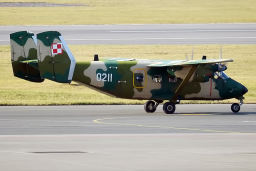
-PZL M-28 Skytruck
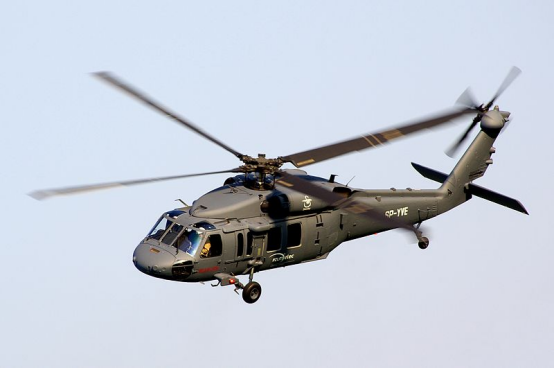
-Produkowany w Mielcu S-70i Black Hawk na Radom Air Show (2011)
-The Euro-Park Mielec Special Economic Zone is located in Mielec , which largely contributed to the diversification of the industry in the city and the stabilization of the economic situation, as well as provided employment to residents after the change of the economy from centrally planned to free market and the resulting redundancies. Inside the zone there are many private companies, mainly light industry. The Mielec Industrial Park is also established in the city. It was divided into two parts by the SEZ and the Wojsław estate.
-Mielec is the largest city and seat of Mielec County. Mielec is located in south-eastern Poland (Lesser Poland), in the Subcarpathian Voivodeship (Województwo Podkarpackie).
-The population of Mielec equals 60,229 inhabitants, as of June 2020.
-Mielec is an industrial center, with technical and IT schools, craft schools and colleges (providing bachelor's degree and master's degree in several fields of study. Postgraduate studies are also available - e.g. MBA) The city has Special Economic Zone Euro-Park Mielec with access to Mielec Airport and railway. About 15 km north of Mielec runs LHS railway - The transshipment terminal in Wola Baranowska enables the exchange of cargo between the broad gauge and standard gauge railways and trucks. About 20 km south of Mielec runs the A4 motorway. Moreover, the city of Mielec supports a recognizable soccer team - Stal Mielec.
-https://pl.wikipedia.org/wiki/Mielec#Gospodarka
-Key projects
-1. Local Revitalization Program for the City of Mielec for 2016-2023
-Revitalization is a process of recovering degraded areas from the crisis state, carried out in a comprehensive manner, through integrated activities for the local community, space and economy, territorially concentrated, carried out by revitalization stakeholders on the basis of the municipal revitalization program. Based on the results of the analysis of existing data, indicators describing the level of socio-economic and spatial development, taking into account the importance of selected areas for the city's development, it was decided to indicate two sub-areas for revitalization in Mielec: Niepodległości and the Old Town.
-The city of Mielec commences revitalization in accordance with the provisions of
-the Revitalization Guidelines in the operational programs for 2014–2020 of the Minister of Development of August 6, 2016 and pursuant to Art. 18 sec. 2 point 6 of the Act of March 8, 1990 on municipal self-government (Journal of Laws of 2015, item 1515, as amended).
-https://mielec.bip.gov.pl/strategie-programy-plany/lokalny-program-rewitalizacji-dla-miasta-mielca-na-lata-2016-2023.html
-2. Culture Development Strategy for the City of Mielec for 2015-2020
-https://mielec.bip.gov.pl/strategie-programy-plany/strategia-rozwoju-kultury-dla-miasta-mielca-na-lata-2015-2020.html
Ⅴ.Attrations and Cityscape
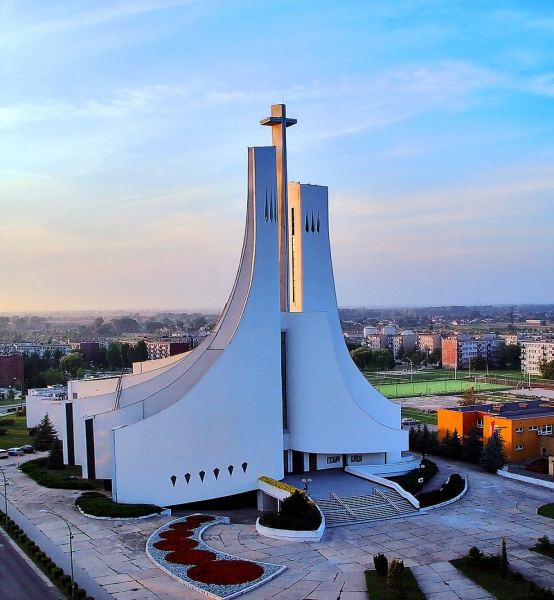
Church of The Holy Spirit in Mielec
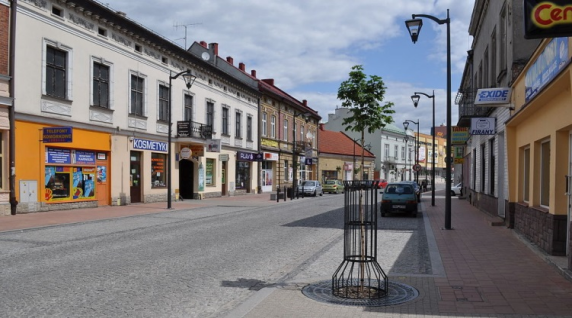
Ulica Adama Mickiewicza
-Immovable monuments entered in the register of monuments of the Podkarpackie Voivodeship
Basilica st. Matthew the Apostle and Evangelist from 1526 along with the fence and the area of the former church cemetery
-Cemetery of the Roman Catholic parish from the second half of the 19th century at ul. Długosza with a cemetery chapel and a fence with a gate
-Cemetery of the Roman Catholic parish from the second half of the 18th century at ul. Rzeczna 2 with a cemetery chapel (currently the auxiliary church of St. Mark the Evangelist )
-The old presbytery at ul. Father Sitka 3
-A villa with a garden from 1933 at ul. Jadernych 1
-A villa from the beginning of the 20th century at ul. Jadernych 5
-Jaderni's photo shop from 1906 at ul. Jadernych 19 ( Jadernówka , now a museum of photography, a branch of the Regional Museum)
-House at ul. Jadernych 21
-A complex of OSP buildings at ul. Kilińskiego 27: wooden watchtower from 1882, wooden bowling alley from 1894, coach house from 1921
-Suchorzewski's manor house from the beginning of the 19th century at ul. Kościuszki 5 with a garden
-Building of the County Council from 1909 (now the State Music School) at ul. Kościuszki 10district court building from the end of the 19th century at ul. Kościuszki 15
-House at ul. Kościuszki 25
-Villa at ul. Kościuszko 28
-House at ul. Krasickiego 1
-House at ul. Legionów 1
-Oborski palace complex (park and palace) at ul. Legionów 73
-Tenement house from 1904 at ul. Mickiewicza 2 ( Łojczykika )
-Tenement house from 1900 at ul. Mickiewicza 5
-House at ul. Mickiewicza 7 in Mielec
-Building of the Gymnastic Society "Sokół" , ul. Sękowskiego 1
-House at ul. Sienkiewicza 17 (wooden)
-Remains of the former church of St. Marek Ewangelisty in Rzochów
-Manor complex (manor house, park, coach house, relics of earth fortifications), ul. Wojsławska 280
-Objects that do not exist today or were moved outside the city
-Mielecki Castle from the 15th century (destroyed by the Swedes in 1655)
-wooden town hall in the Market Square (most probably consumed by a fire before 1789) New Synagogue at Joachima Lelewela Street (burned down by the Nazis in 1939) wooden church of St. Mark in the Rzochów district (in 2010 moved to the open-air museum in Kolbuszowa )
Ⅵ.History and Culture
-The first mention of a place called Mielec occurs in the thirteenth century in the 1229 bull of Pope Gregory IX. In the second half of the fourteenth century, "Mielecka" was mentioned in a list of parishes. The city of Mielec, part of Sandomierz Voivodeship and Lesser Poland Province of the Polish Crown, was founded on 17 March 1457, when King Casimir IV granted a charter to Jan Mielecki for the establishment of a city under the name of Nowy Targ. For unknown reasons Jan Mielecki did not go on to found the city; it was eventually established by his two sons, Jan and Bernardyn, by an Act of 18 December 1470. The Mielecki family owned the town of Mielec until the last of the Mieleckis died in 1771. Under their rule, there was intensive development of craft industries. In 1522, the first guild was founded. This was the blacksmiths' guild. It was followed by guilds of tailors, cobblers, potters, spinners, and weavers.
-The next owners of Mielec were the Ossolinski and Morsztyn families. In 1775, Anna Ossilińska married Jan Pieniążek, bringing as a dowry her share of part of the city. The next owner was Ignacy Suchorzewski, who married Pieniążek's daughter Paulina. Suchorzewski sold Mielec's property to Ludwik Starzeński in 1847, who then disposed of it ten years later to a Jewish family named Gross. The last owner of Mielec was the Oborski family in 1891.
-In 1853, the county town of Mielec governed an area in which there were 106 settlements and 91 castral municipalities. In 1892, on Kosciuszko Street a new City Council building and police barracks were built. The development of the county town was interrupted by a huge fire, which destroyed three quarters of the city. This catastrophe caused the city to apply for a state loan of 12 crowns, the receipt of which led to the rapid development of the city. By the beginning of the twentieth century, the market place in Mielec was surrounded by brick houses, and in 1902, a courthouse was built. In 1912, a gymnasium (or academic high school) and the office of County Council were established and buildings constructed to house them.
-World War I caused much damage to the infrastructure and economy of city of Mielec and the county. In the interwar years many streets were paved with cobbles. In addition, a private power plant, various craft workshops, and retail businesses were established. In 1934, the Mielec region suffered a huge flood that destroyed more than 11,000 households. The house and photographic studio of the early 20th-century Polish photographer August Jaderny [pl] was a meeting place of the local artistic community in the interbellum.
-Mielec's economy has been based for the last 70 years around a single industrial enterprise, which transformed the city and increased its population sixfold. This process began in the 1930s, when Poland launched a significant expansion of its armaments industry, focused on building factories in the newly created Central Industrial Region (Polish: Centralny Okręg Przemysłowy, abbreviated COP). In 1936, a state-owned factory making airplane chassis was established (State Aviation Works - Airframe Fakcory No. 2) on the outskirts of the town, an area then known as Cyranka. The factory started to build a new bomber, the PZL P-37 or "Łoś" (English: "Moose"). In addition in the years 1937-1939 a large aviation factory belonging to the PZL company was set up. This new manufacturing industry necessitated the development of residential housing for factory workers and management personnel.
-After the outbreak of World War II, the city and the airplane company fell into the hands of the German invaders. The period of German occupation lasted from 9 September 1939 to 6 August 1944 in Mielec. In the years of 1939–1944, the factory produced German bombers, and from 1943 also manufactured the fighter plane He–297. The Nazis staffed much of the factory with slave labour. Initially, Jews from Mielec were enslaved in this forced labor camp. In 1942, the Jewish population of Mielec was deported to death camps, except for a few who remained as slave labour at the factory. Before the war, the Jewish population of Mielec was 2,800 out of a total population of 5,500. During the deportation, the factory hangars were the site of a mass murder of several hundred of Mielec's Jews, who were buried there. Subsequently, the factory used slave labour composed of Jews from other regions, prisoners of war, political prisoners, etc. The Gestapo used Jewish informants, the so called V-leute in region to penetrate underground resistance and denounce hiding Jews;special barracks were set up in labour camp near Mielec for Jewish informers and their families, who were granted special privileges. These informants operated between 1942 and 1943 when they were finally executed by Gestapo themselves. After the war, a monument was placed at the factory with a vague inscription typical of holocaust memorials during the Communist era: "To those employees of the Factory and the inhabitants from the area of both Polish and Jewish nationality murdered during World War II: A tribute from Mielec's Youth." Another mass grave of Jews with a monument may be found in one corner of the Mielec Catholic cemetery, where the victims of a 1941 Nazi atrocity were buried. During the German occupation, all of Mielec's Jewish institutions and the Jewish cemetery were destroyed, and also many of the Jewish homes. During the German occupation, the Polish underground resistance movement had important centers in the former house of photographer August Jaderny and in the house of the Dębicki family. On March 29, 1943, a Polish underground partisan unit Jędrusie and the Home Army successfully carried out a daring attack on a German prison and liberated about 180 prisoners.
-Oborski Palace, now housing the Regional Museum
-After 1945, the factory became the largest aviation factory in Poland under the name WSK-Mielec "Wytwórnia Sprzętu Komunikacyjnego" (English: "Transport Equipment Manufacturing Centre"). This plant was the main source of employment for people in Mielec and surrounding communities. At first, the factory produced Soviet-designed planes under license. Thus, it was the primary production site of the widely used An-2 transport plane. It also manufactured Polish versions of the MiG-15 and MiG-17fighters. The factory also built planes designed in Poland such as the trainer plane TS-11 Iskra used by Poland and India. It produced over 16,000 aircraft, which were mainly licensed for export to the USSR.
-After 1989 and the economic changes due to the fall of communism, factory orders declined and the plant encountered serious financial difficulties. It continued to produce successful aircraft types, but at much lower volumes than during the Cold War. Self-government of Mielec Township was established in 1990.
-The situation changed in 1995, due to the establishment of Poland's first Special Economic Zone EURO-PARK Mielec. In 1998 the aviation plant changed its name to PZL-Mielec "Polskie Zakłady Lotnicze" (English: "Polish Aviation Works"). In 2007 the factory was acquired by Sikorsky (in 2015 Sikorsky was acquired by Lockheed Martin), and was planned to be the main production site of the export version UH-60 Black Hawk helicopter. Also Mielec has been the production site of sports-luxury car Leopard 6 Litre Roadster.
Ⅶ.Other Information
-Mielec - a city in south-eastern Poland, in the Podkarpackie Province, the seat of the authorities and the center of the Mielec County. The city is located in the Wisłoka Valley, in the Sandomierz Basin.
Ⅷ.Contact Information
-JACEK WIŚNIEWSKI Mayor of the City of Mielec
-phone: 17 788 85 04
-e-mail: sekretariat@um.mielec.pl
-URZĄD MIEJSKI W MIELCU ul. Żeromskiego 26, 39-300 Mielec
-tel.: 17 787 40 00, fax: 17 787 40 15
